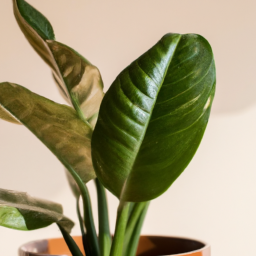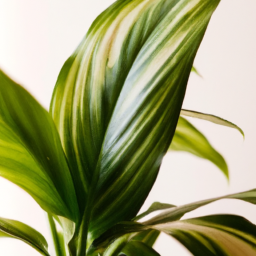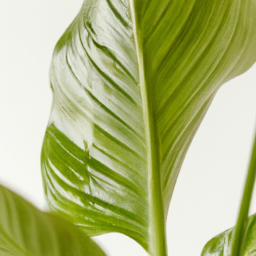
Are you looking to add some greenery to your home but not sure where to start? Well, you’re in luck because today we’re discussing the best indoor house plants to brighten up your space. Whether you have a green thumb or can barely keep a cactus alive, there’s a perfect plant out there for everyone. So let’s dive in and explore some of the top contenders for the title of ‘Best indoor house plant’.
Benefits of Having Indoor House Plants
Improved Air Quality
One of the main benefits of having indoor house plants is the improvement in air quality that they provide. Plants are natural air purifiers, as they absorb carbon dioxide and release oxygen through the process of photosynthesis. In addition to producing oxygen, plants also remove toxins from the air, such as formaldehyde, benzene, and trichloroethylene. This can help to reduce indoor air pollution and create a healthier living environment for you and your family.
Some of the best indoor house plants for improving air quality include spider plants, peace lilies, and pothos. These plants are known for their ability to remove toxins from the air and can thrive in a variety of indoor environments. By incorporating these plants into your home, you can enjoy cleaner, fresher air and reap the health benefits that come with it.
In addition to improving air quality, indoor house plants can also help to regulate humidity levels in your home. Plants release water vapor through a process called transpiration, which can help to increase humidity in dry indoor environments. This can be especially beneficial during the winter months when indoor heating systems can dry out the air and cause respiratory issues.
Stress Reduction and Mental Health Benefits
Another benefit of having indoor house plants is the positive impact they can have on your mental health and well-being. Studies have shown that being around plants can help to reduce stress, anxiety, and depression. The presence of greenery and nature indoors can create a calming and relaxing atmosphere, which can improve your mood and overall sense of well-being.
In addition to reducing stress, indoor house plants can also help to improve focus and productivity. Research has shown that having plants in your workspace can enhance concentration, memory, and creativity. By incorporating plants into your home office or study area, you can create a more productive and inspiring environment that can help you stay focused and motivated.
Some of the best indoor house plants for promoting mental health and well-being include lavender, jasmine, and aloe vera. These plants are known for their calming and soothing properties, and can help to create a peaceful and harmonious atmosphere in your home. By surrounding yourself with these plants, you can improve your mental health and create a sanctuary for relaxation and self-care.
Enhanced Aesthetic Appeal and Decor
In addition to their health benefits, indoor house plants can also enhance the aesthetic appeal and decor of your home. Plants add a touch of nature and greenery to indoor spaces, creating a warm and inviting atmosphere. Whether you prefer a minimalist or bohemian style, there are indoor house plants to suit every taste and decor aesthetic.
Plants come in a variety of shapes, sizes, and colors, making them versatile and adaptable to any space. From hanging planters and terrariums to large floor plants and succulents, there are endless options for incorporating plants into your home decor. You can create a statement piece with a fiddle leaf fig tree, or add a pop of color with a flowering orchid or begonia.
Indoor house plants can also help to soften hard lines and add texture to indoor spaces. Plants can be used to create natural dividers and boundaries in open floor plans, or to add visual interest to empty corners and shelves. By strategically placing plants throughout your home, you can create a cohesive and harmonious design that brings the outdoors in.

Top 10 Indoor House Plants for Beginners
Choosing the Right Indoor House Plant
When it comes to choosing the best indoor house plant for beginners, there are a few key factors to consider. First and foremost, you’ll want to think about the amount of light your space receives. Some plants thrive in bright, direct sunlight, while others prefer lower light conditions. It’s also important to consider how much time and effort you’re willing to put into caring for your plant. Some plants require more attention and maintenance than others. Finally, you’ll want to think about the overall aesthetic you’re going for in your space. Do you want a plant with big, lush leaves, or are you more drawn to plants with delicate flowers?
Top 10 Indoor House Plants for Beginners
1. Snake Plant: Also known as mother-in-law’s tongue, the snake plant is a hardy plant that thrives in low light conditions. It requires very little water, making it perfect for beginners who may not have a green thumb.
2. Pothos: Pothos plants are known for their trailing vines and heart-shaped leaves. They are extremely easy to care for and can thrive in a variety of light conditions.
3. Spider Plant: Spider plants are great for beginners because they are nearly impossible to kill. They produce small white flowers and baby spider plants, which can be propagated and shared with friends.
4. Peace Lily: Peace lilies are beautiful plants that thrive in low light conditions. They also help purify the air, making them a great addition to any indoor space.
5. ZZ Plant: ZZ plants are incredibly low maintenance and can thrive in low light conditions. They have waxy, dark green leaves that add a touch of elegance to any room.
6. Rubber Plant: Rubber plants are great for beginners because they are very forgiving when it comes to watering. They have large, glossy leaves that add a tropical feel to any space.
7. Aloe Vera: Aloe vera plants are not only beautiful, but they also have medicinal properties. They require very little water and can thrive in bright, indirect sunlight.
8. Jade Plant: Jade plants are succulents that are easy to care for and can thrive in a variety of light conditions. They have thick, fleshy leaves and are said to bring good luck and prosperity.
9. Dracaena: Dracaena plants come in a variety of shapes and sizes, making them a versatile choice for any indoor space. They are relatively low maintenance and can thrive in low light conditions.
10. Philodendron: Philodendrons are popular house plants known for their heart-shaped leaves. They are easy to care for and can thrive in a variety of light conditions.
Caring for Your Indoor House Plants
Once you’ve chosen the perfect indoor house plants for your space, it’s important to know how to care for them properly. Here are a few tips to help your plants thrive:
– Water your plants regularly, but be careful not to overwater. Most indoor house plants prefer to dry out slightly between waterings.
– Keep an eye on the light conditions in your space and adjust as needed. Some plants may need more light, while others may prefer lower light conditions.
– Monitor the humidity levels in your home, especially during the winter months when indoor air can become dry. Consider using a humidifier or placing a tray of water near your plants to increase humidity.
– Dust your plants regularly to keep their leaves clean and free of debris. This will help them absorb more light and stay healthy.
– Finally, be sure to repot your plants as needed to give their roots room to grow. Choose a pot with drainage holes to prevent overwatering and root rot.
By following these tips and choosing the right indoor house plants for your space, you can create a beautiful and thriving indoor garden that will bring joy and beauty to your home.

How to Care for Your Indoor House Plants
Choosing the Right Indoor House Plants
When it comes to choosing the right indoor house plants, there are a few key factors to consider. First and foremost, you’ll want to think about the amount of light your space receives. Some plants thrive in bright, direct sunlight, while others prefer low light conditions.
Next, consider the size of the plant and how much space you have available. Some indoor house plants can grow quite large, so make sure you have enough room for them to flourish. Additionally, think about how much time and effort you’re willing to put into caring for your plants. Some varieties require more attention and maintenance than others.
Once you’ve taken these factors into account, you can start exploring different types of indoor house plants. Some popular options include spider plants, pothos, peace lilies, and snake plants. These plants are known for their ability to thrive indoors and are relatively easy to care for.
Providing the Right Environment for Your Plants
In order for your indoor house plants to thrive, it’s important to provide them with the right environment. This includes ensuring they have access to the appropriate amount of light, water, and humidity.
Most indoor house plants prefer bright, indirect sunlight. Place your plants near a window where they can receive plenty of natural light throughout the day. If your space doesn’t get much sunlight, consider investing in a grow light to help your plants thrive.
When it comes to watering your indoor house plants, it’s important to strike the right balance. Overwatering can lead to root rot, while underwatering can cause your plants to wilt and die. Check the soil regularly and water your plants when the top inch feels dry to the touch.
Finally, consider the humidity levels in your home. Most indoor house plants prefer a humid environment, so consider misting your plants regularly or investing in a humidifier to keep them happy and healthy.
Caring for Your Indoor House Plants
In addition to providing the right environment for your indoor house plants, it’s important to stay on top of regular care and maintenance. This includes pruning your plants to encourage healthy growth, repotting them when they outgrow their containers, and keeping an eye out for pests and diseases.
Pruning your plants involves removing dead or yellowing leaves, as well as trimming back overgrown branches. This helps your plants stay healthy and encourages new growth. When repotting your plants, choose a pot that is slightly larger than their current container and ensure it has good drainage to prevent waterlogging.
Finally, keep an eye out for common pests such as spider mites, aphids, and mealybugs, as well as signs of disease such as mold or mildew. If you notice any issues, take action immediately to prevent them from spreading to other plants.
By following these tips and guidelines, you can ensure that your indoor house plants thrive and bring beauty and life to your home. Remember to stay consistent with your care routine and enjoy the benefits of having greenery indoors.
Here are the Essential Points
So you’ve decided to bring some greenery into your home, but you’re not sure where to start. Well, look no further because I’ve got the scoop on the best indoor house plant for you! Drumroll, please… the snake plant! This low-maintenance beauty not only looks great with its tall, striking leaves, but it also helps purify the air in your home by removing toxins like formaldehyde and benzene. Plus, it can survive in low light and doesn’t need to be watered very often, making it perfect for busy plant parents.
But wait, there’s more! Another top contender for the title of best indoor house plant is the pothos. This vine plant is a total showstopper with its cascading leaves that can grow long and lush. Pothos are super easy to care for and can thrive in a variety of lighting conditions, from bright indirect light to low light. They’re also great for beginners because they’re forgiving if you forget to water them every now and then. So whether you’re looking to add some greenery to your space or just want to improve your indoor air quality, the snake plant and pothos are definitely top picks for the best indoor house plant.
Frequently Asked Questions (FAQ):
Q1. What are some of the best indoor house plants for beginners?
A1. If you’re new to indoor gardening, some easy-to-care-for plants to consider are pothos, snake plant, spider plant, and peace lily. These plants are low maintenance and can thrive in a variety of indoor conditions.
Q2. How often should I water my indoor house plants?
A2. The frequency of watering indoor plants varies depending on the type of plant, the size of the pot, and the environmental conditions. As a general rule, it’s best to check the soil moisture before watering and ensure that the soil is dry to the touch before watering again.
Q3. What are some indoor house plants that can help improve air quality?
A3. Plants such as aloe vera, spider plant, peace lily, and snake plant are known for their air-purifying qualities. These plants can help remove toxins from the air and create a healthier indoor environment.
Q4. How much sunlight do indoor house plants need?
A4. The amount of sunlight required for indoor plants varies depending on the species. Most indoor plants prefer bright, indirect light, while some plants like succulents and cacti thrive in direct sunlight. It’s important to research the specific light requirements of each plant before placing them in your home.
Q5. What are some creative ways to display indoor house plants in my home?
A5. There are many ways to showcase your indoor plants, such as hanging planters, wall-mounted planters, decorative pots, terrariums, and plant stands. You can also group plants together to create a mini indoor garden or place them in different rooms to add a touch of greenery to your living space.

Alex Turner is a sustainable gardening advocate and the founder of an acclaimed indoor gardening blog. With a focus on eco-friendly practices and urban sustainability, Alex combines his background in environmental studies with his love for plants to educate readers on mindful indoor gardening. His work highlights the importance of nurturing both plants and the planet.


